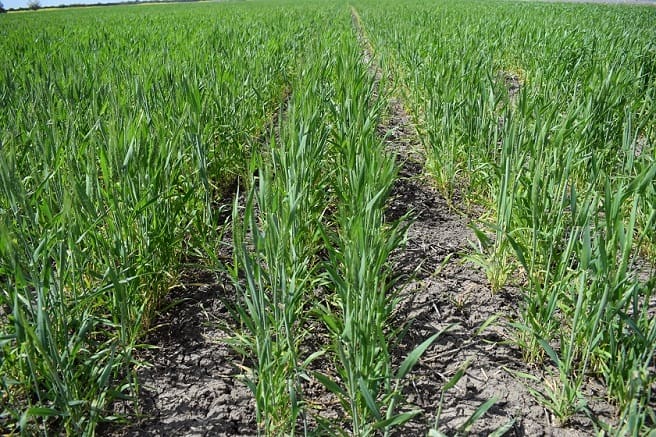
POTENTIAL total grain production for Western Australia is firm at around 20 million tonnes heading into spring, according to the latest crop report from the Grain Industry Association of WA (GIWA).
Based on current crop growth, timing of crop development, sub-soil moisture and the area planted, crop report author Michael Lamond said there was significant upside potential.
Crop tonnage estimates rarely increase from this time of the year as unfavourable climatic events and other risks can substantially reduce the final outcome in most years.
Frost is shaping up as the greatest risk to achieving or exceeding the current estimated tonnage.
Whilst there is a big spread in crop development across the regions which will help minimize the risk of large wipeouts from one-off frost events, the early start to the season means the whole crop will be exposed to a longer period of risk.
An upside to this is that recovery from frost is likely to be better than normal due to the good levels of sub-soil moisture.

The most recent WA Department of Primary Industries and Regional Development (DPIRD) forecast indicates that whilst “minimum temperatures are predicted to be lower than normal over September and October, the atmospheric pressure patterns are unlike those of 2016. A repeat of the exceptional number of events during September 2016 is unlikely given current model forecasts”.
Heat stress is still a potential threat as it is in most years, although the above average levels of sub-soil moisture across the state will help crops get through any spikes in temperature during grain fill.
Crops have more top growth than normal and shallow root structures from the soft growing conditions.
This could lead to a very quick deterioration in grain yield when the inevitable heat comes on.
The continued loss of crop area to waterlogging and the capacity of these areas to recover before harvest will have an impact on final tonnage in those areas worst affected.
The very good growing conditions have brought with it the increasing risk of mice damage to canola and lupins particularly in the northern areas of the state, and locusts to all crops in the eastern areas of the state.
Foliar disease in all crops is starting to get going in the south and sclerotinia is a threat to all canola crops.
Weather conditions leading up to harvest are forecast to be drier than average which will have a positive impact in what has been a very wet year to date.
With significant strain on the whole grain supply chain from the tight labour supply situation and well above average expected tonnage, harvest could be a drawn-out affair exposing growers to higher than normal harvest losses.
On balance, whilst most growers are experiencing one of the best years in recent times and a record tonnage is likely, there are still the usual risks out there along with some that WA growers have not experienced for a while.
Source: GIWA
Further detail on crop conditions in individual WA port zones can be found on the GIWA website.

HAVE YOUR SAY